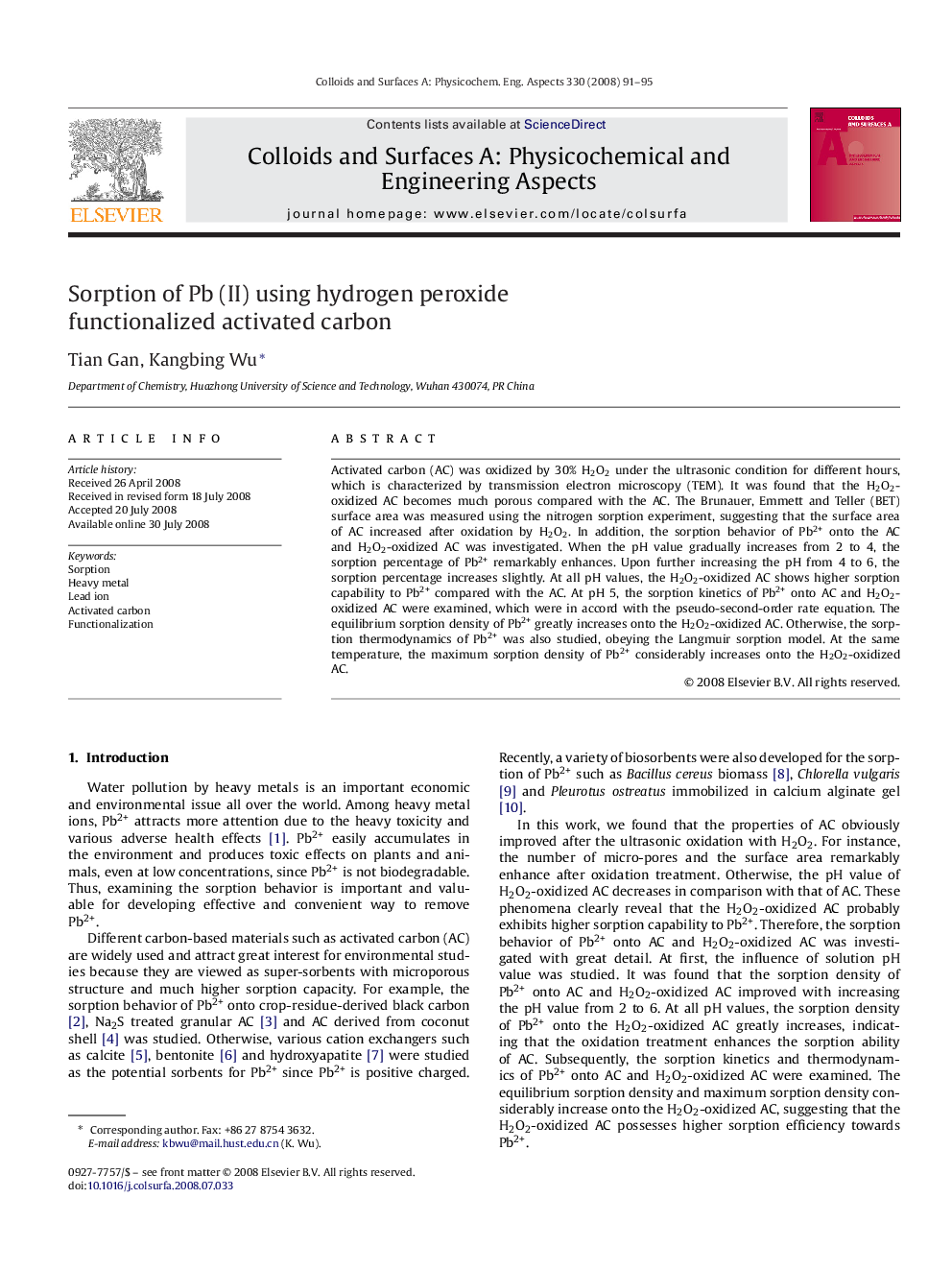| Article ID | Journal | Published Year | Pages | File Type |
|---|---|---|---|---|
| 596424 | Colloids and Surfaces A: Physicochemical and Engineering Aspects | 2008 | 5 Pages |
Activated carbon (AC) was oxidized by 30% H2O2 under the ultrasonic condition for different hours, which is characterized by transmission electron microscopy (TEM). It was found that the H2O2-oxidized AC becomes much porous compared with the AC. The Brunauer, Emmett and Teller (BET) surface area was measured using the nitrogen sorption experiment, suggesting that the surface area of AC increased after oxidation by H2O2. In addition, the sorption behavior of Pb2+ onto the AC and H2O2-oxidized AC was investigated. When the pH value gradually increases from 2 to 4, the sorption percentage of Pb2+ remarkably enhances. Upon further increasing the pH from 4 to 6, the sorption percentage increases slightly. At all pH values, the H2O2-oxidized AC shows higher sorption capability to Pb2+ compared with the AC. At pH 5, the sorption kinetics of Pb2+ onto AC and H2O2-oxidized AC were examined, which were in accord with the pseudo-second-order rate equation. The equilibrium sorption density of Pb2+ greatly increases onto the H2O2-oxidized AC. Otherwise, the sorption thermodynamics of Pb2+ was also studied, obeying the Langmuir sorption model. At the same temperature, the maximum sorption density of Pb2+ considerably increases onto the H2O2-oxidized AC.
